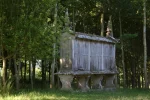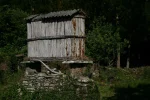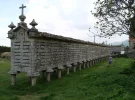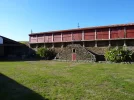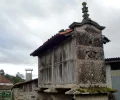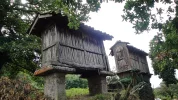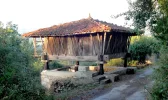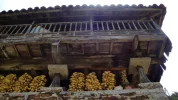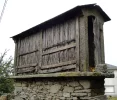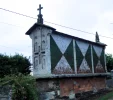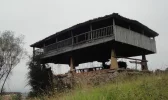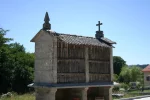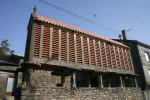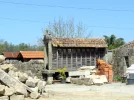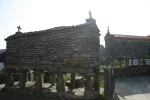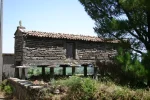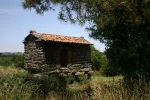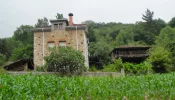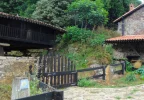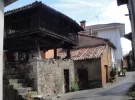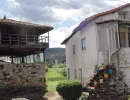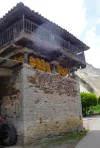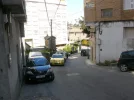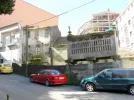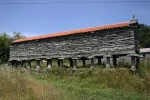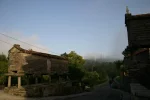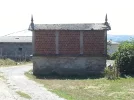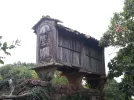Kinkyone
I didn't know about Slovenian horreos, but I knew about them in other parts of Europe. Actually the aerial barn is the most efficient way to preserve grain from humidity and rodents.
Theatregal, shows us interesting photos probably from the Primitivo. Here you can see the type from Asturias, square with four pillars, and the type from Galicia wich is rectangular with either wall of stones or pillars. In the Primitivo, horreos are many of them in a poor condition but in other richer parts of Galicia there are spectacular horreos like that one from Theo´s in Carnota. In fact, the horreo showed the economic status of the family. The wealthy families sometimes contracted canteiros to build big horreos in carved stone.
Horreos were mainly used to store corn, but today many of them are used only as box room.
As you can see, horreos in Galicia have on top two symbols:One is the Christian cross and the other is a pagan symbol of fertility with phallic shape. Both are to protect the food inside and to ask for future good crops Apparently, and it is my speculation, when Galicia became Christian, farmers put the cross on top but kept the previous pagan symbol "just in case".
The cross on top has confused some of you. But obviously people in Galicia are buried like in most of the world in cemeteries, Catholic style. Cemeteries in Galicia have the particularity that the parish church is inside, mostly in the middle of the cemetery.


